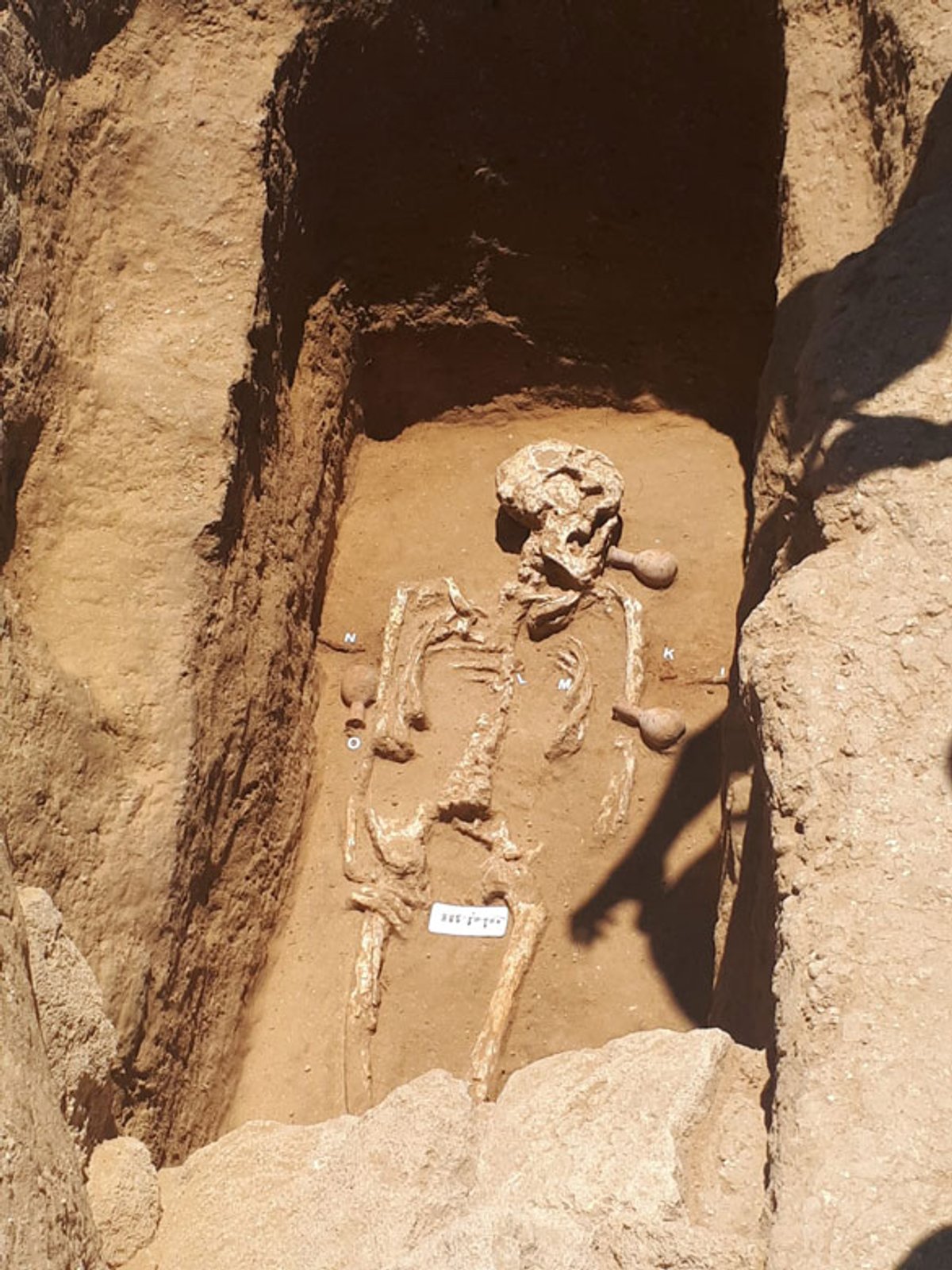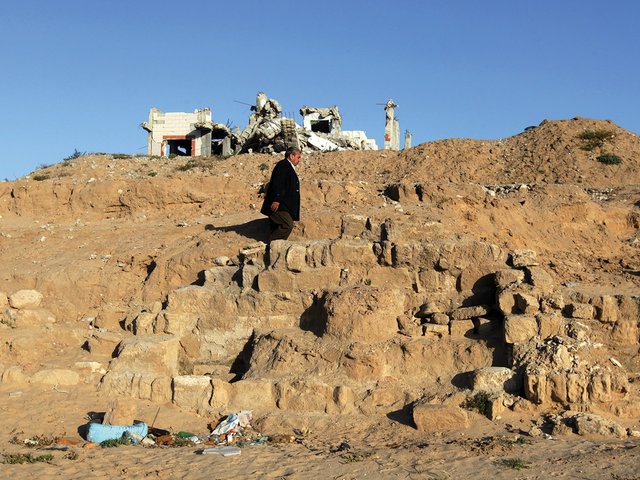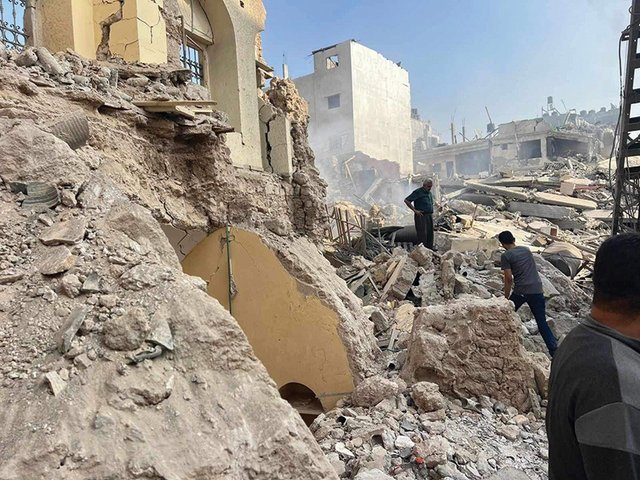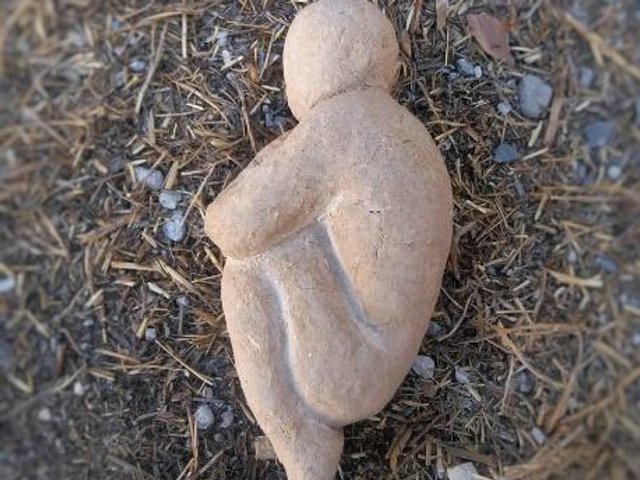The recent discovery of at least 125 tombs—many with skeletons still intact—in the Roman necropolis of Ard-al-Moharbeen in the Gaza Strip has unearthed new information about burial rituals, trade, and social networks in the area. “It’s rare to discover an intact Roman burial site, where nothing has been stolen,” says Anthony Dutemple, the head of mission in Palestine for the French non-governmental organisation Premiere Urgence Internationale (Pui).
Ephemera such as bottles of perfume and coins in the mouths of skeletons—offerings to the god of the underworld—have remained in place. The sarcophagi found to date feature intricate engravings of dolphins, an indicator that the dead may have been fishermen, as well as images of vineyards, an allusion, Dutemple explains, to the “tree of life, representing eternity”. The team also found two rare lead sarcophagi at the site dating from the second and third centuries AD.
Pui and the École Biblique et Archéologique Francaise (Ebaf) organised the dig carried out by Palestinian archaeology students near the city of Jabalyah. The organisations have trained 88 students (44 men and 44 women) since 2017. The project has been funded by grants from the British Council’s heritage protection programme and the Agence Francaise du Development. According to Dutemple, the team of students from the University of Palestine and the Islamic University of Gaza, were “impressed by what they saw”. Pui anticipate that more tombs will be found in the coming months.
One of the many disadvantages of Israel’s 16-year blockade of Gaza is difficulty accessing important archaeological tools and technology. As a result, there were no official digs until Pui began their training programme for archaeology students in 2017. Up until that time students had no access to actual sites and could only read about them in textbooks.
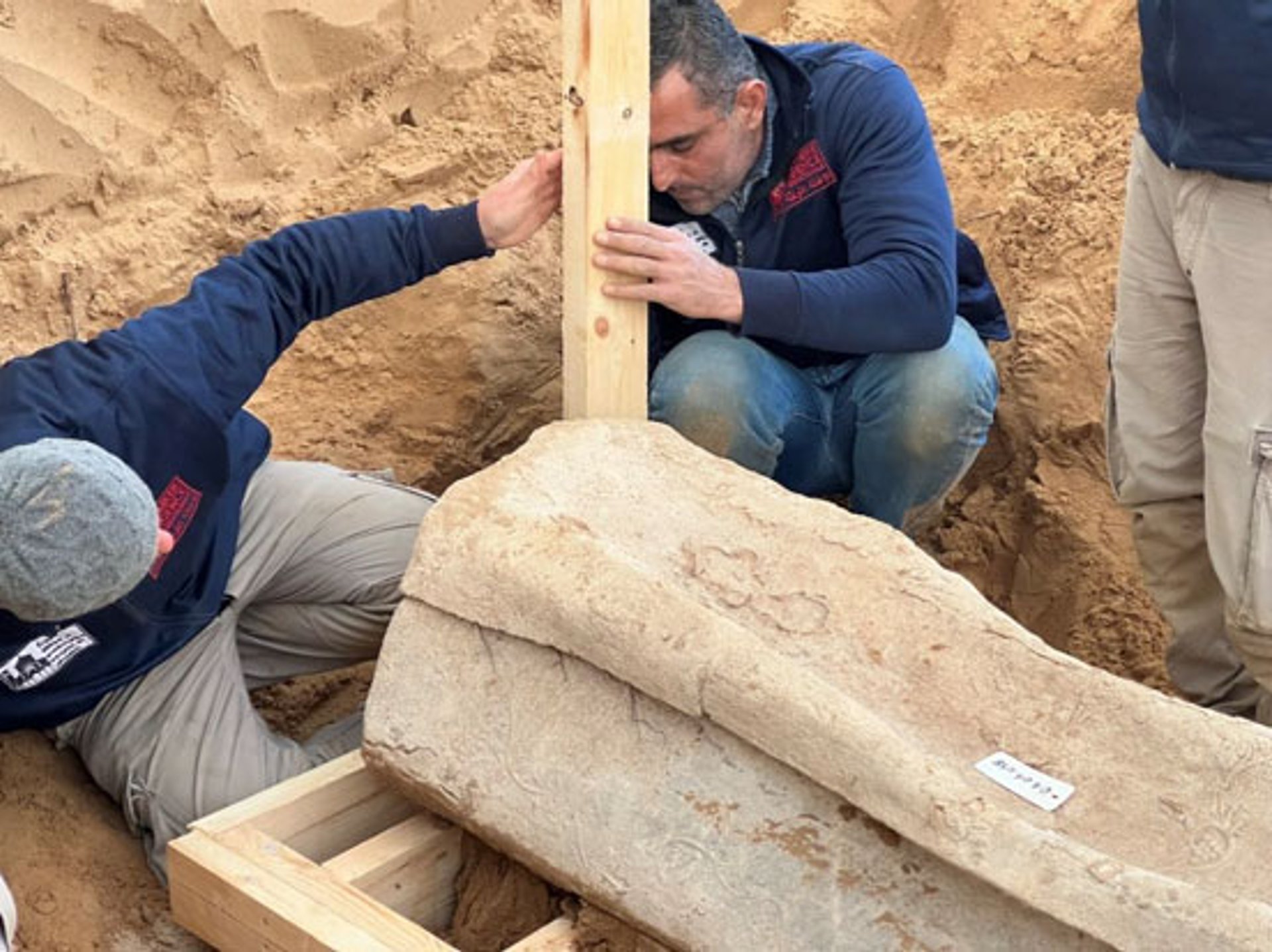
Archaeologists at work on the site
In addition to its world heritage significance, the discovery of the necropolis underscores Gaza’s status as a treasure trove of ancient sites, often overshadowed by the reality of ongoing occupation. Bombing by the Israel Defense Forces in May narrowly missed hitting the Byzantine church in Jabalyah, whose stunning mosaics have been recently restored by the Pui programme.
The Ard-al-Moharbeen necropolis was first discovered in January 2022 by construction engineers at work on one of four new cities being built in Gaza by the Egyptian government but it was kept under wraps for security reasons until January of this year. The Gazan Ministry of Antiquities, which lacks its own archaeological resources, first called the Pui team to visit the site in February of 2022. But after lengthy negotiations with Egyptian construction companies, they were only able to return last autumn.
Since then, Dutemple says, the site has offered “a unique understanding of the relationship between the ancient port of Gaza—Anthedon—and the port of Ashkelon—now in Israel”.
Many of the youth enrolled in the training programme have never been able to leave Gaza. “For them to realise that there was once a connection between the two ports,” Dutemple says, “has been a milestone in their understanding of ancient and contemporary realities.” The work also gives students a sense of “pride in their heritage”.


